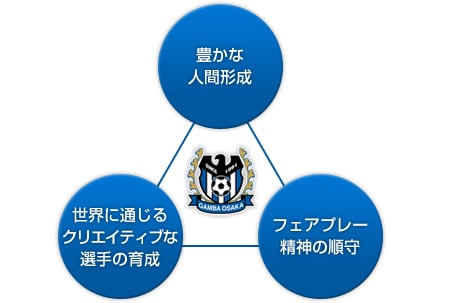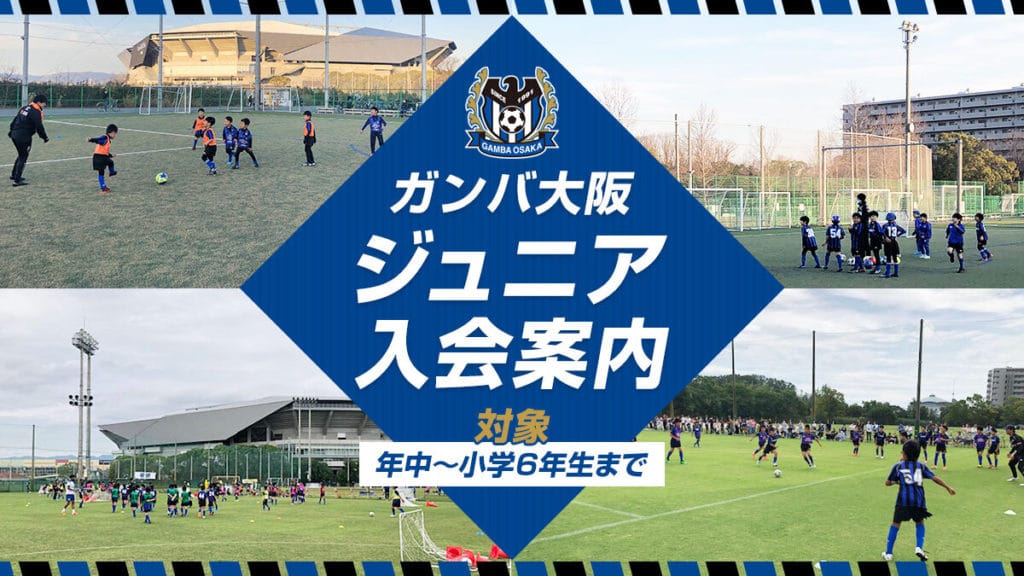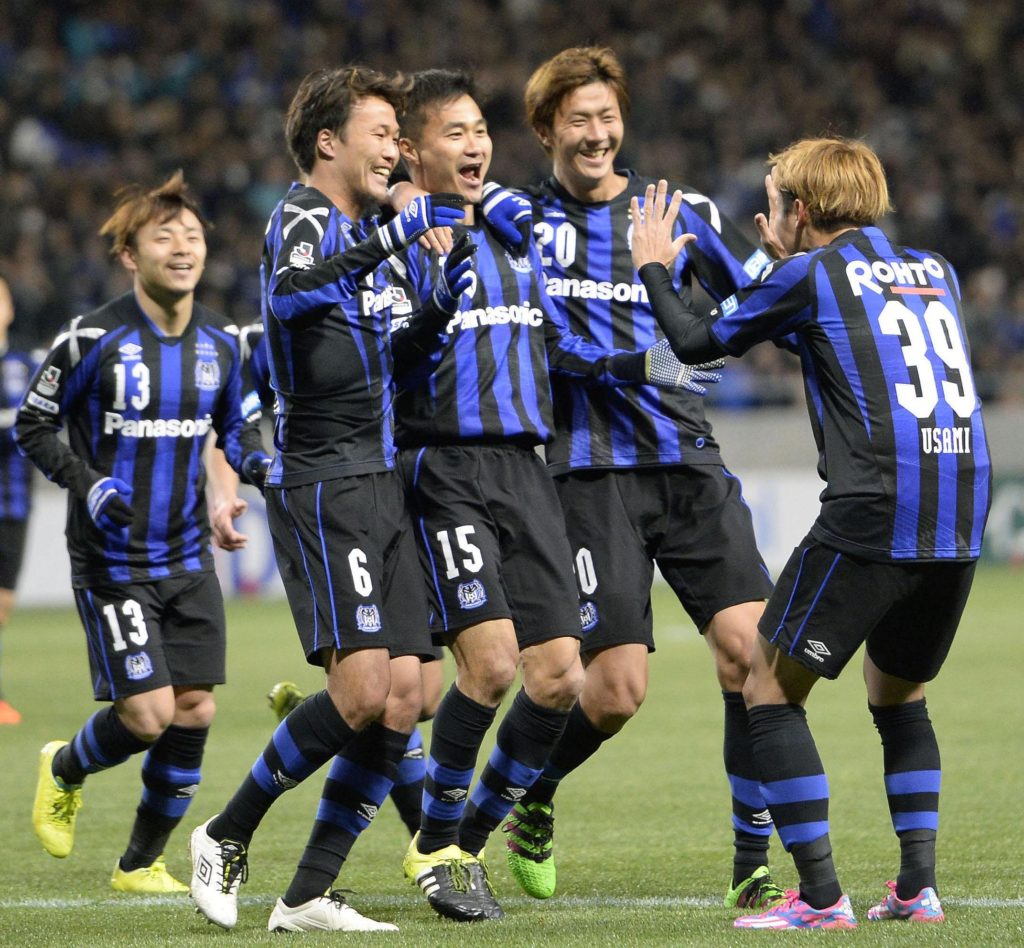Gamba Osaka Tryouts
Gamba Osaka (ガンバ大阪, Gamba Ōsaka) is a Japanese professional football club based in Suita, Osaka Prefecture. The club plays in the J1 League, which is the top tier of football in the country.
Gamba Osaka Youth Development System
Gamba Osaka Academy
The Gamba Osaka Academy, which is operated under an integrated guidance system, has a large number of players from kindergarten and elementary school students to high school students.

Professional staff provide guidance with a common understanding, and academy students dream of joining the top and are working hard on their daily training.
In 2021, 10 academy players will be enrolled in the top team
A large number of youth and junior youth graduates have joined the top team from the academy, which is operated with the aim of further improvement, centered on good players, good leaders, and a good environment. In addition to Masaaki Higashiguchi, Yosuke Ideguchi, and Takashi Usami, who have been selected as representatives of Japan this season, the top team includes Shu Kurata, who carries the uniform number “10”. There are as many as 10 academy players enrolled.
Professional Staff
Gamba Osaka Academy consists of three categories: kindergarten children (older), juniors from 1st to 6th grades of elementary school, junior youths by junior high school students, and youths by high school students. Experienced instructors are assigned to each category to provide the necessary guidance for the growth of athletes and their ages. With the top team at the top, we are focusing on developing truly professional players while establishing an integrated guidance system from juniors to youth.

Training System
The players who fled from Gamba Osaka Academy and continue to play an active role not only in the J League but also on the world stage are one of the achievements brought about by the “integrated guidance system”. The academy is working to become a more fulfilling organization every day, and in 2018, we established a dormitory exclusively for Gamba Osaka Academy, and while continuing to focus on training athletes and instructors, we will continue to focus on “professionals”. With the aim of establishing a training system that can only be achieved by the team’s academy, we will definitely create rails that will lead to the future.

EXPLORE MORE CLUBS!
Explore more professional clubs by continent.
History
A soccer club in Nara Prefecture that was established in 1980 under the name Matsushita Electric Industrial Co., Ltd. and is currently competing in the Japan Soccer League. On October 1, 2008, the club changed its name to Panasonic Corporation.
It was primarily composed of players and staff members that were left over from the defunct Yanmar Club, which was the old B-team of Yanmar Diesel F.C. and would eventually be renamed Cerezo Osaka. In 1993, Gamba Osaka was one of the first members of the J. League, known as one of the “Original Ten.” In 2005, the team won its first J.League championship on the thrilling final day of the season, when any one of five clubs had a chance to win the title.
Gamba required a victory while also hoping that their crosstown rivals, Cerezo Osaka, would either draw or fall short. Gamba prevailed over Kawasaki Frontale with a score of 4–2, but Cerezo had their victory taken away by an equalizer scored by FC Tokyo in the 92nd minute. Gamba Osaka defeated Da Nang FC of Vietnam in a match for the AFC Champions League in 2006, earning a 15–0 victory that tied the previous record for largest margin of victory. Gamba Osaka won the Pan-Pacific Championship in 2008 by defeating Houston Dynamo, 6–1, in the tournament’s final.
A significant portion of this victory may be attributed to Bare, who scored four goals in the final game for Gamba Osaka (5 in all at the tournament). As a result of his outstanding performance and the fact that he had recently scored 10 goals in 18 games for Gamba in the domestic league, the United Arab Emirates club Al-Ahli purchased him for 1 billion yen.
After playing to a 1–1 draw at home in the first leg, Gamba registered one of the most historic comebacks in Champions League history when they came back from being behind 1–0 before half time to win 1–3 with all goals scored in the second half at Saitama. This was the first time in Gamba’s history that they had made it to the final of the AFC Champions League.
This victory came in October 2008, and it was the first time in Gamba’s history that they had done so. After defeating the giant-killing Australian side Adelaide United 5–0 on aggregate in the Final of the 2008 AFC Champions League, Gamba Osaka went on to claim the title of AFC Champions League champion. After Urawa, Jbilo Iwata, the then-company-affiliated Yomiuri (now Tokyo Verdy), and Furukawa Electric, they were the fifth Japanese club to win the maximum Asian title (now JEF United Ichihara Chiba).

After defeating Adelaide United 1-0 in the quarterfinals of the 2008 FIFA Club World Cup in December of that year, Gamba advanced to the semifinals of the competition. They were eliminated in the semifinals by Manchester United, who went on to win both the Premier League and the UEFA Champions League that season.
They played for third place against a Mexican team called C.F. Pachuca on the 21st of December in 2008, and Gamba ended up winning the match 1-0. After suffering a loss against Jbilo Iwata by the score of 2–1, Gamba were demoted from Division 1 in the month of December 2012. Gamba scored more goals than any other club in the league, including champion Sanfrecce Hiroshima, but they nevertheless finished 17th in the league standings.
Gamba ultimately was unable to overcome their terrible defense, which allowed the second most goals in Division 1 behind only Consadole Sapporo. Despite the fact that Gamba finished the season with a positive goal differential, they were not able to win the championship. This also made Gamba Osaka the club with the shortest amount of time between winning the AFC Champion’s League and playing in the FIFA Club World Cup and then being demoted from the top level.
The relegation occurred only four years after the club won the AFC Champion’s League. The club, on the other hand, was able to get back on its feet during the 2013 season, when it won the J2 championship and returned to Division 1 after only one season’s absence. Gamba became became the second team in the history of professional soccer to accomplish this feat by claiming the title of Tier 1 in 2014, one year after claiming victory in the second division (after Kashiwa Reysol in 2011).
In the same year, Gamba also became the second club in Japan to win the domestic treble (after Kashima Antlers in 2000), when they won both the J.League Cup and the Emperor’s Cup. Kashima Antlers were the first club to accomplish this feat in 2000. Gamba Osaka participated in the AFC Champions League for the first time since 2012, when they reached the semi-finals before being eliminated by Guangzhou Evergrande, who went on to win the tournament and finish in fourth place at the 2015 FIFA Club World Cup.
Gamba Osaka returned to the competition in 2015 for the first time since 2012. Gamba Osaka reached the final of the J.League Cup and the J1 League Championship, but both times they were defeated by Kashima Antlers (0–3) and Club World Cup Third Place Sanfrecce Hiroshima (3–4) respectively. On the domestic front, Gamba Osaka won the J.League Cup. Gamba Osaka was able to successfully retain their title as Emperor’s Cup champions by claiming a 2–1 victory over Urawa Red Diamonds.







